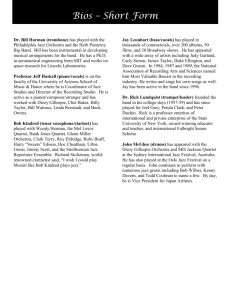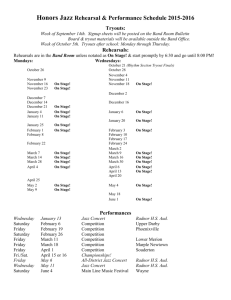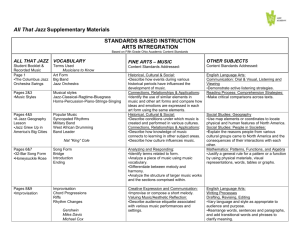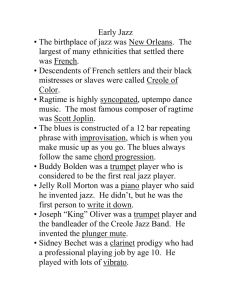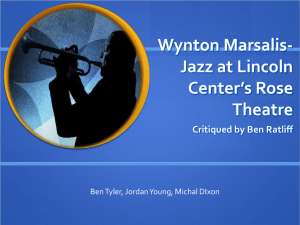Parlophone Issues of the Recording of
advertisement
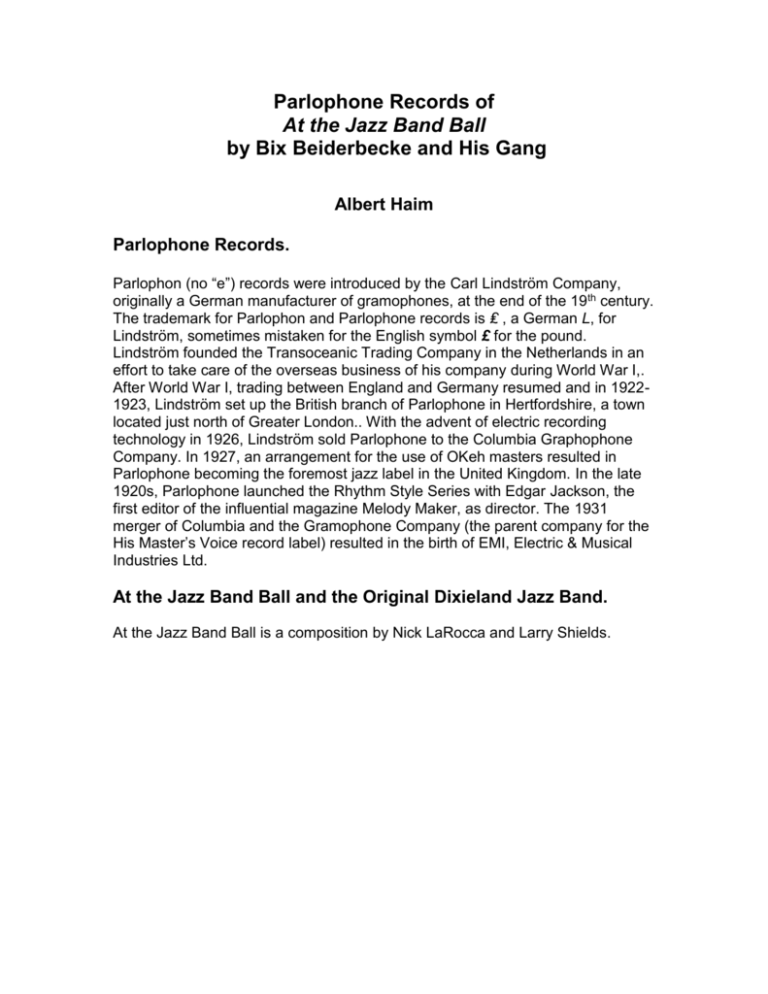
Parlophone Records of At the Jazz Band Ball by Bix Beiderbecke and His Gang Albert Haim Parlophone Records. Parlophon (no “e”) records were introduced by the Carl Lindström Company, originally a German manufacturer of gramophones, at the end of the 19th century. The trademark for Parlophon and Parlophone records is ₤ , a German L, for Lindström, sometimes mistaken for the English symbol £ for the pound. Lindström founded the Transoceanic Trading Company in the Netherlands in an effort to take care of the overseas business of his company during World War I,. After World War I, trading between England and Germany resumed and in 19221923, Lindström set up the British branch of Parlophone in Hertfordshire, a town located just north of Greater London.. With the advent of electric recording technology in 1926, Lindström sold Parlophone to the Columbia Graphophone Company. In 1927, an arrangement for the use of OKeh masters resulted in Parlophone becoming the foremost jazz label in the United Kingdom. In the late 1920s, Parlophone launched the Rhythm Style Series with Edgar Jackson, the first editor of the influential magazine Melody Maker, as director. The 1931 merger of Columbia and the Gramophone Company (the parent company for the His Master’s Voice record label) resulted in the birth of EMI, Electric & Musical Industries Ltd. At the Jazz Band Ball and the Original Dixieland Jazz Band. At the Jazz Band Ball is a composition by Nick LaRocca and Larry Shields. It was first recorded by the Original Dixieland Jass Band in New York on Sep 3, 1917 and issued on Aeolian Vocalion AV 1205. Note that the record label gives the title of the piece using the spelling “jass.” The Original Dixieland Jazz Band (now jazz not jass) recorded the tune again in New York on Mar 19, 1918; this was issued on Victor 18457. The title of the tune as printed on the record label also uses the spelling “jazz.” A third recording of the number was made by the ODJB when they visited England in 1919-1920. The tune was recorded on April 16, 1919 and released on a 12-inch English Columbia Col 735. According to the April 1956 issue of Gramophone, “The old 12-inch Columbias by the O.D.J.B. are among the top rarities of jazz.” There was one additional recording of At the Jazz Band Ball in the 1910s: the Synco Jazz Band, one of several names used by Joseph Samuels in some of his early recordings, waxed the tune in March 1919, Pathe 22122, vertical cut; Empire 31110; Arrow 502] There is only one recording of At the Jazz Band Ball in the 1920s, the one by Bix Beiderbecke and His Gang, OK 40923. There were about half a dozen recordings of the tune in the 1930s. But beginning in 1940, and for the following several decades, At the Jazz Band Ball became a jazz standard. Tom Lord’ online discography lists 487 recordings of the tune. The First Recording Session of Bix Beiderbecke and His Gang. The Jean Goldkette Victor Recording Orchestra had its final engagement on Sep 18, 1927 at Roseland, and then disbanded. Bix, Trumbauer, Rank, Murray and Morehouse joined Adrian Rollini’s New Yorkers. This was a short-lived band: it opened at the Club New Yorker on Sep 22, 1927 and closed on Oct 15, 1927. During that period, members of the New Yorkers made several seminal jazz recordings under the direction of Frank Trumbauer and of Bix Beiderbecke. Bix’s recordings were issued under the name of Bix Beiderbecke and His Gang. The Gang consisted of Bix Beiderbecke (c), Bill Rank (tb), Don Murray (cl), Adrian Rollini (bsx), Frank Signorelli (p) and Chauncey Morehouse (d). At their first recording session, October 5, 1927, Bix and His Gang recorded three numbers: At the Jazz Band Ball was the first. There were three takes. Takes A and C were destroyed. Take B was issued as Okeh 40923. The other two titles waxed on that day were Royal Garden Blues and Jazz Me Blues. All three numbers originate in the ODJB repertoire. Bix had great admiration for Nick LaRocca and the ODJB. As a matter of fact, Bix learned to play cornet by listening repeatedly to the ODJB recording of Tiger Rag and following LaRocca’s cornet part. It is noteworthy that two of three numbers cut in that session, Royal Garden Blues and Jazz Me Blues, had been recorded three years earlier by Bix with the Wolverine Orchestra. As Richard Sudhalter points out in the booklet for the Mosaic CD set on Bix, Tram and Teagarden, “It is hardly stretching things to suggest that the three titles done at Bix’s debut OKeh session with his “Gang” constitute the birth of what later became known as jazz repertory: an act of homage to an earlier group through performances of numbers they’d helped make famous, in at least an approximation of their style.” It is noteworthy that Bix does not play a solo in At the Jazz Band Ball, but he is clearly the leader: he sounds confident, assertive, and carefree; his delivery is forceful and decisive, and he stimulates his fellow musicians to reach new heights. The recording sounds spontaneous and fresh. This is surprising in view of Bill Rank’s recollection that “Everyone was tired, slightly hung-over and grumpy. [Richard M. Sudhalter and Philip R. Evans, Bix, Man and Legend.] The Parlophone Recordings of At the Jazz Band Ball. Appendix B of Bix, Man and Legend is a comprehensive discography of Bix recordings compiled by Philip R. Evans and Richard Dean-Myatt. They list the following Parlophone issues. Par E R-3645 (England). [This is typographical error: the correct number is 3465]. Par E R-2711 (England). Par G A-4917 (Germany). Par It B-71141 (Italy). Par G R-3645 (Germany). Par Ss R-2711 (Switzerland). Brian Rust’s Jazz and Ragtime Records (1897-1942) does not list the German issue R-3645 (or 3465). The listing of this record in Sudhalter and Evans is in error: there were no German Parlophone issues with the same number as the original (R-3000 series) English pressing. English Parlophone R-3465 was released in1928, just a few months after the American OKeh issue. It is noteworthy that the band is titled “Bix Beiderbeck [sic] presents His Orchestra” and that the recorded speed is given as 80 rpm.” English Parlophone R-2711 was issued in 1939. There were three Rhythm Style Series in the 1920s, 1930s and 1940s: (First) New Rhythm Style Series, Second New Rhythm Style Series and Miscellany Rhythm Style Series. R-2711 was No. 8 in the latter series. For the Rhythm Style Series issue, the speed is specified to be 78 rpm. German Parlophone records were released with A-4000-4999 numbers in 19271930. Parlophon was spelled without an “e.” German issue A-4917 is one of these and is extremely rare, as are most records in the A-4000 series. It was probably issued in the late 1920s. I have been unable to find a copy of A-4917, but present here, for illustration, another Parlophon record in the A-4000 series, namely, A-4912. I find it interesting that the phrase “Manufacturado en Alemania” is written in Spanish, perhaps because these were sold in Spanish-speaking countries. Some other records in the same German A series specified, in addition to “Manufacturado en Alemania,” “Germany,” while other records only mention the word “Germany.” In addition to the A-4000 records, there were R-100-2700 German Parlophone (with an “e”) records issued in 1940-1944. These had the same catalogue numbers as the English issues, but the label did not show "Made in England" or any other nationality. The labels indicated that they were part of the Rhythm Style Series. Here is a scan of German Parlophone R 2711, not listed in Rust’s Jazz discography or in Appendix B of Sudhalter and Evans’ Bix, Man and Legend. The labels of the German R 100-2700 series were totally different in appearance than the corresponding English issues. The latter were light blue in color with the word Parlophone written in light blue color over a wide golden background. The German Rhythm Style Series have the look of English Parlophone records from the early to mid 1930s, dark background with golden lettering, perhaps because they were made for export as if they were English records. These records are described as “strange.” [http://www.swingtime.de/swings/parlrhen.html ] Italian Parlophon (no “e”) records were released with the prefix “B.” The following record was issued in the 1940s. The Swiss record is very interesting. It was probably released in the 1940s. Ordinarily, Swiss Parlophone records were issued in the PZ series. But in this case, we have a Swiss Parlophone with the same catalogue number as the English issue R-2711, part of the Miscellany Rhythm Style Series. It is noteworthy that all Parlophone record labels, just as the original OKeh record, but in contrast with some other record labels, include the master number of the issued take (81520) of At the Jazz Band Ball. Another interesting point is that Parlophon issues from Germany, Italy and Switzerland use English for the title of the tune and for the name of the band. This is in contrast with, for example, some German Odeon issues, where the name of the orchestra, but not the title of the tune, is translated into German. The O-20,000 series was issued in the mid-1930s for the German and European markets. Interestingly, some Odeon records produced in Argentina gave the title of the tune and the name of the band in Spanish. Acknowledgments. I am grateful for helpful discussions and/or their gifts of scans of record labels to Enrico Borsetti (Italy), Bix Eiben (Netherlands), Han Enderman (Netherlands), Bjorn Englund (Sweden), Norman Field (England), Rainer E. Lotz (Germany), Joe Moore (England), Robert Lachowitz (Austria) , Andreas Schmauder (Germany), Ate van Delden (Netherlands).and Stephan Wuthe (Germany).
